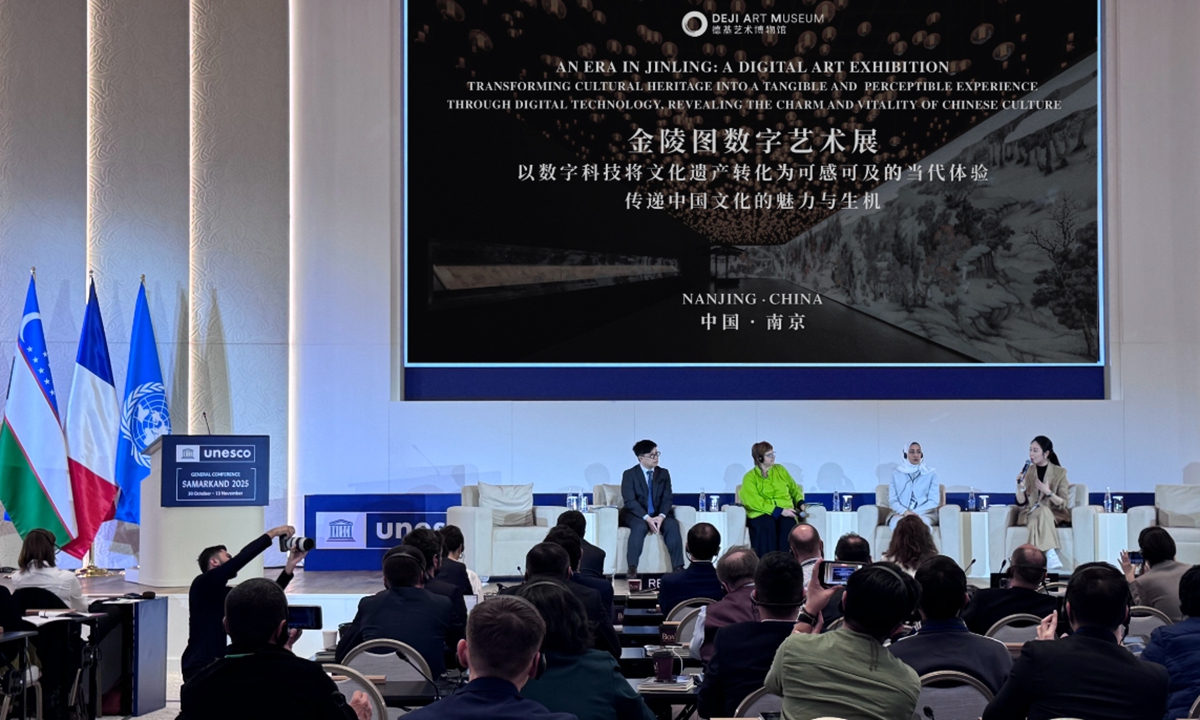

In Samarkand’s UNESCO conference room, a 10-meter-long Qing Dynasty (1644-1911) scroll painting was brought to life through high technology. An Era in Jinling, once a fragile relic in Nanjing, East China’s Jiangsu Province, unfurled in ultra-HD animation, revealing 533 digital living figures walking around crowded markets, ferrying goods along rivers, and pausing to share tales under the light of lanterns.
Medea Ekner, director-general of the International Council of Museums (ICOM), said she hopes China’s Deji Art Museum can “share your practices internationally.” Yannick Lintz, head of the Guimet National Museum of Asian Arts in France, called the animation an “interactive film-like experience” that she hopes to replicate.
Their enthusiasm signals a turning point: China has not merely digitized heritage; it has redefined how the world’s museums can breathe life into the past.
The challenge is universal: How can museums attract young people? China’s response is elegantly logical. The museum’s scroll exhibition lets viewers zoom into a tea-house where dialogue shifts with cursor movement or pull back to watch seasonal winds ripple across the Qinhuai River.
Time and space dissolve. Visitors do not observe history; instead, they can be part of it. According to the museum’s director Ai Lin, with a smart wristband and a mobile phone, visitors can “walk” into the painting and even interact with the people depicted therein.
This is not gimmickry but translation. China treats digitization as a contemporary dialect of an ancient tongue. The Palace Museum’s Virtual Forbidden City recreates dawn over the Meridian Gate; Dunhuang’s Digital Library Cave peels away centuries of sand.
Each project asks: How do you make silence speak? The answer lies in cultural confidence – the belief that heritage can endure reinterpretation. Where others fear AI will trivialize, Chinese curators see continuity. They hope to make heritage come alive with the vitality of modern technology.
As noted by experts from overseas museums, this innovative approach particularly resonates with younger audiences, paving new ways for museums to attract visitors and expand their educational impact.
In recent years, from high-precision restoration of cultural relics to metaverse exhibitions, Chinese cultural institutions have been steadily advancing the deep integration of technology and culture. This represents not only a technological innovation in the preservation and presentation of cultural heritage but also a striking practice of the philosophy to “let cultural relics and history speak.”
At the heart of the Chinese approach lies the interpretation of traditional wisdom through contemporary language, empowering cultural inheritance with technology, and revitalizing cultural heritage in the digital age.
The global sharing of China’s experience reflects the contemporary imperative of civilizational exchange and mutual learning.
The global sharing of China’s experience reflects the imperative of civilizational exchange. At UNESCO, China’s initiatives have served as key references in AI-museum discussions, while institutions like the Guimet have expressed interest in collaboration. This demonstrates that leveraging technology to promote heritage can reach across borders.
Against globalization’s backdrop, China contributes expertise openly, joining nations to explore new preservation pathways and inject cultural vitality into a shared future. Digitalization is not mere layering of technology, but a profound transformation in cultural expression.
China’s gift to UNESCO is a method: preserve respectfully, transform innovatively and share generously.
The author is a reporter with the Global Times. life@globaltimes.com.cn











